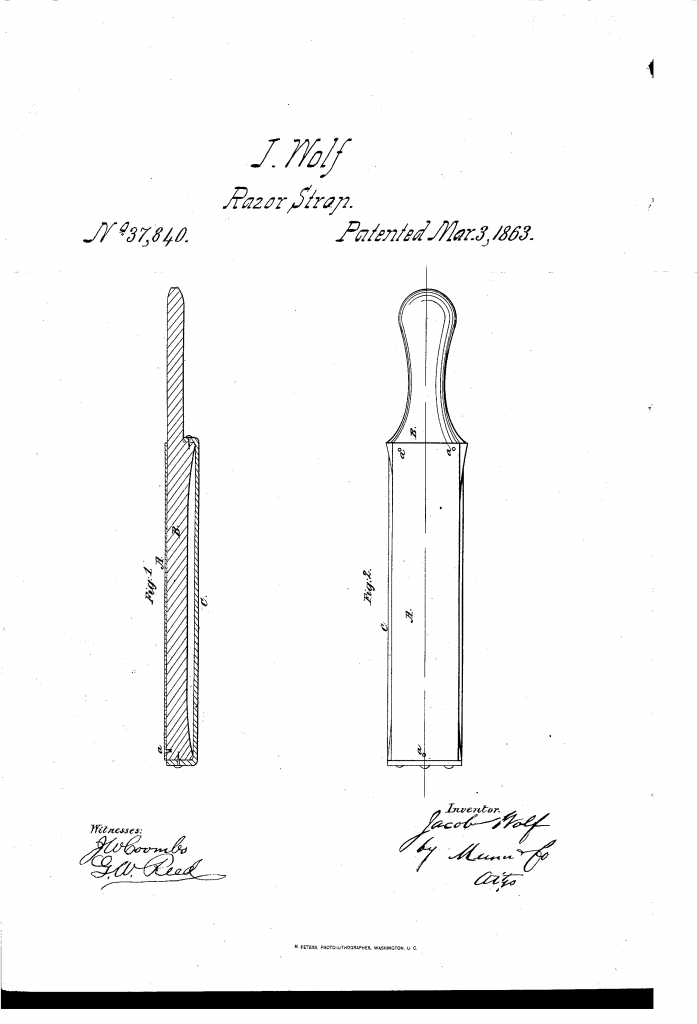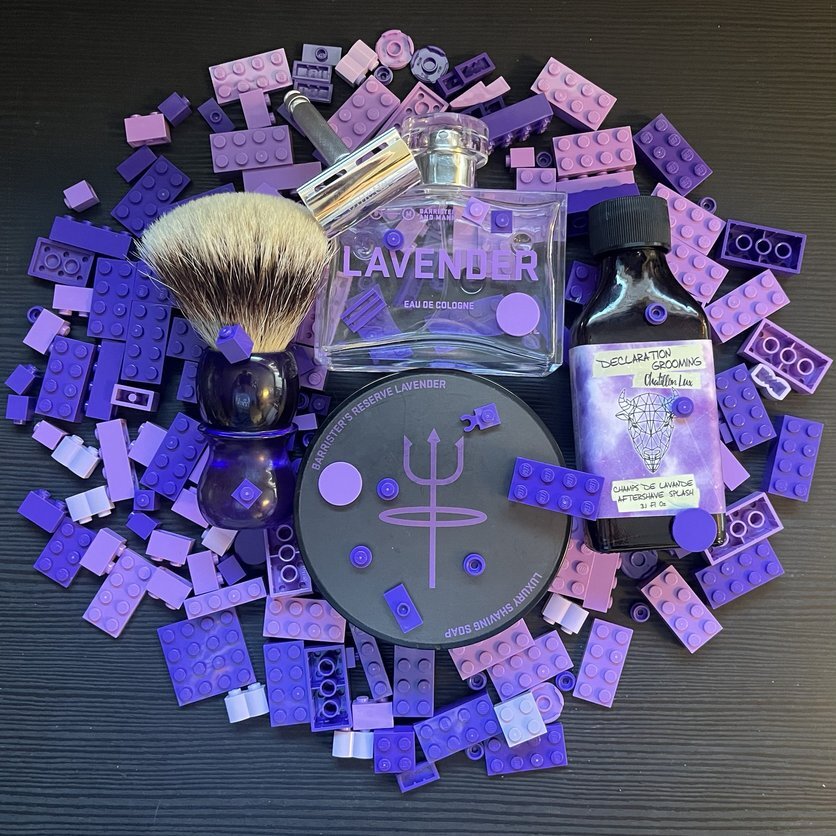Metallic razor strops must been popular in the middle of the 19th century. Not that long after the self-corroding bimetal hone and the polished metal strop, Jacob Wolf got a patent for an improvement in razor strops. An improvement that included, you guessed it, metal.
Zinc, to be specific. As most of you know, zinc is a fairly soft metal,1 so using it for stropping or honing a razor at least shouldn’t damage the harder steel of the razor.
Like many of the really old patents, Jacob combined a simple drawing with a clear description. So I’ll let him describe the construction and use of his improved razor strops:
A represents a plate of sheet-zinc, which is firmly secured to a frame or handle, B, formed similar to the handle of an ordinary razor strop. Said frame may be made of a solid block of wood, and the plate A, which is fastened to it at its ends by tacks or screws a, or in any other desirable manner, may rest on its upper surface from end to end, or the frame may be hollowed out so as to form a case or receptacle for the razor, and the plate A may be attached to its top by means of a swivel or in any other suitable manner, so that it can be turned out of the way when it is desired to take the razor out or put it in. To the opposite side of the frame B am ordinary leather strop, C, may be attached. In using my metallic razor-strop the razor is moved toward the cutting-edge, instead of moving it in the opposite direction, as is generally done in ordinary leather strops to pre vent them getting cut by accident, awkward ness, or carelessness, and if the metal plate A is kept clean, its effect on said cutting-edge is much superior to that of ordinary leather strops, and the razor can be kept sharp and in good order without the aid of a stone, or any other means commonly used for this purpose. The metal plate A will last for many years, it is not liable to be cut in sharpening the razor, and its first cost will certainly not exceed that of an ordinary leather strop. The metallic plate is made of polished zinc, and its effect upon the blade of a cutting instrument is to produce a finer edge than any leather or elastic strop. My improvement may be used dry, without oil or any moisture, and either the motion be aforementioned, or that commonly given to the razor in sharpening it upon a strop or hone, may be employed.

Patent drawing from US patent 37,940, showing Jacob Wolf’s improved razor strop.
From the description it is clear that Jacob intended to use the polished zinc surface to hone the razor. In that way it don’t differ much from the last two metallic hones we looked at, but where Jacob do them one better is by including a regular leather strop.
I still don’t know enough about honing straights to say if using polished zinc or steel is a good idea or not. At least with Jacob’s invention a shaver could simply flip it around and use the leather.
You can read the whole patent for the improvements in razor strops over at Google Patents.
- And the main component of the much maligned ZAMAK alloy – an alloy family that has many uses, one of which is making affordable safety razors.


True, but it is “just” a claim Jacob made in his patent application.